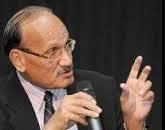
Operation is the only remedy to get relief from this disease. Mesh, which is a piece of synthetic cloth, was introduced in the market in 1990 for use in hernia repairs. We stitch a small piece of cloth to repair our torn shirt. Same principle is used in mesh repairs where in this mesh is stitched on the weak spot or hernia hole to give protection and prevent recurrence. Relapse rate or failure rate after groin hernia surgery has come down to 7-8% in USA after every body started doing hernia surgery by using a mesh, but it failed to give complete cure.
In all traditionally done hernia surgeries, hernia sac is excised and a mesh is stitched on this weak spot or this hernia hole in an attempt to give protection to the weak spot and prevent relapse or recurrence. But this does not happen immediately after surgery because this mesh is delicate like a mosquito net. Then why it is stitched if it does not give protection? A foreign body reaction sets in and around the mesh and tissue penetrates in it to form a delicate curtain on the weak spot. This takes couple of months and then it takes another 2-3 years to get sufficient strength in it to give protection. It means the patient is not fully protected for 2-3 years in spite of mesh surgery. If patient gets an attack of cough or sneezing or some such other instance during this period then this mesh gets torn or stitches get torn or mesh moves away from the stitched place and relapse of hernia takes place. Another important reason for more relapses or recurrences seen in India is the low quality mesh used to save on the cost. This low quality mesh shrinks by 50-60% in side the body. Naturally there is increased tension on the sutures due to this shrinkage that tend to break beyond certain limits inviting hernia recurrence. Mesh shrinkage or mesh migrations are well documented complications inviting failures after the mesh surgeries. All hernia surgeries are done by hernia experts or consultants in USA, but, paradoxically in India, hernia surgeries are dedicated to the resident doctors who are not expert in hernia surgeries. This is also one of the important reasons for high rate of hernia recurrences in India.
A story of 38 year old Mr. David from USA is worth listening. He had left groin hernia since 2 years. He consulted with 2-3 consultants and hernia experts in Los Angeles, All of them had said that they will repair his hernia with a mesh. As is done by every American, David also did his own thorough search on the internet to get more knowledge about groin hernias. He found that almost 30 out 100 patients operated with mesh had suffered either from recurrence or chronic groin pain or infection or mesh migration in to the abdomen. These patients had undergone either open surgeries or endoscopic surgeries. So he started search to find out whether there is any centre which does hernia surgeries without using mesh. To his amazement, he found only two such centre all over the world. One was Shouldice centre in Canada and another was “Desarda Centre” in Pune from India. During his further search, he found that Shouldice centre use stainless steel wires to sutures and there is 1-2% of recurrence. So he chose Desarda Centre and came here to our Indian Hernia Institute to get his hernia set right. This story did not end with David, but many more patients from USA, France, and Australia etc have visited our centre for their hernia repairs. The main reason why every body now prefers to come to our centre for his hernia repair is that we do not use any foreign body like mesh. Therefore, no complications are seen in our repairs that are associated with mesh. We use a strip of near by strong muscle to cover the weak spot or hernia hole. Therefore, protection starts on the operation table itself. And patient gets almost complete cure without any fear of relapse or recurrence in future.
Dr. Desarda has operated on more than 2500 patients till today by this new technique and all of them are well and without any recurrence till today. This operation does not require general anesthesia, it is done under local or spinal anesthesia. Patient is admitted in the morning and taken for surgery immediately after preparation. Time required for surgery is average 30 minutes and patient can be on his foot as soon as anesthesia effect is gone. Normally patient goes to pass urine on his own within 4-5 hours and he is freely mobile in the wards same day night or next day morning ready to get discharged and go home. There are no restrictions on his movements or food intake. He can drive car and go to office, can climb a staircase, can carry luggage and travel, squat and sit down without much pain within 2-3 days. He is asked to carry his normal routine work as soon as possible and as per his tolerance. So, patient gets high level of satisfaction after this new operation technique. All foreign patients coming to Indian Hernia Institute go back to their country on third day carrying their luggage and a journey of 20-22 hours without any difficulty. The most important quality of this operation is that there is virtually no recurrence or pain. This operation is spreading quite rapidly all around the globe and today it is being followed in many countries.

Comments should be on the topic and should not be abusive. The editorial team reserves the right to review and moderate the comments posted on the site.